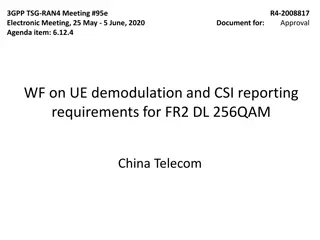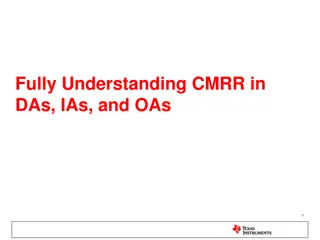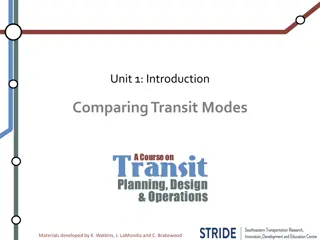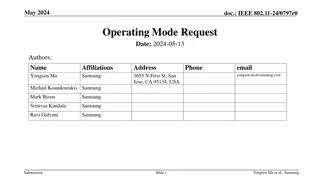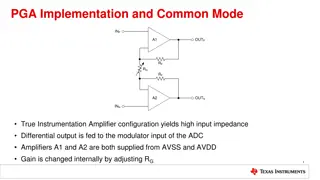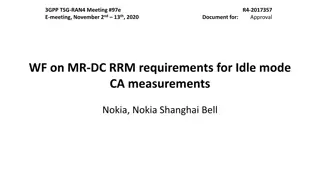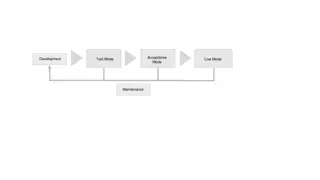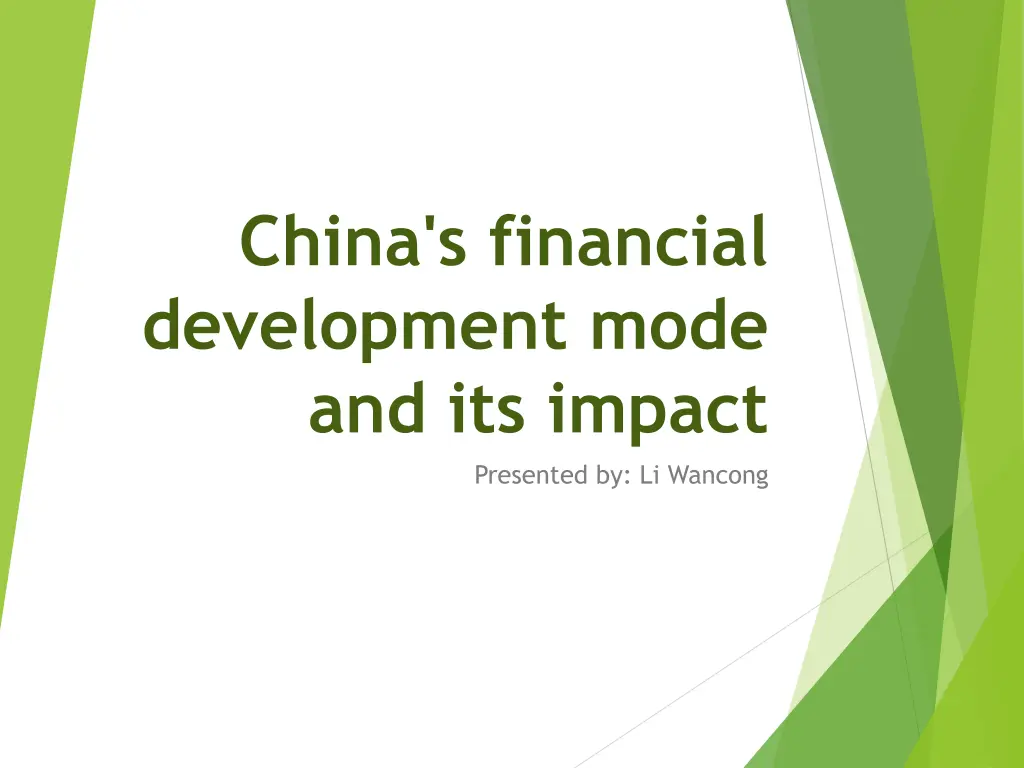
China's Financial Development Mode: Before and After 1978
Explore China's financial system evolution pre- and post-1978, highlighting the stages of reform, from a centrally controlled economy to a more market-oriented approach. Learn about the challenges faced, such as shadow banking and stock market issues, and strategies to prevent financial crises in China.
Download Presentation

Please find below an Image/Link to download the presentation.
The content on the website is provided AS IS for your information and personal use only. It may not be sold, licensed, or shared on other websites without obtaining consent from the author. If you encounter any issues during the download, it is possible that the publisher has removed the file from their server.
You are allowed to download the files provided on this website for personal or commercial use, subject to the condition that they are used lawfully. All files are the property of their respective owners.
The content on the website is provided AS IS for your information and personal use only. It may not be sold, licensed, or shared on other websites without obtaining consent from the author.
E N D
Presentation Transcript
China's financial development mode and its impact Presented by: Li Wancong
Content China s financial system before 1978 Different stages of China s financial reform Shadow banking with Chinese characteristics Current problems of stock market How to avoid financial crisis in China?
Chinas financial system before 1978 In 1950s in accordance with the Soviet Union, China established its system of savings and investment In planned economy, almost all resources were controlled by the government. People could neither decide their consumption individually nor accumulate wealth. The government determined production plans of enterprises and distributed production factors. Profits were handed over to the state. Both savings and investment were controlled by the government. From 1952 to 1978, total amount of social accumulation was 1203.2 billion, while government accumulation was 965.2 billion, higher than 80% of total social accumulation. The government collected idle funds of individuals through banks, and banks lent them to enterprises under the national credit plan to made up for the shortage of cash flow in enterprises. There was no risk in financial system during this period, but distribution of financial resources was inefficient.
Different stages of Chinas financial reform Since 1978, China's financial market has undergone a process of rapid expansion and increase in complexity. 1978-1992: initial establishment of central bank system In 1978, the People's Bank of China was separated from the Ministry of Finance, it started to exercise the function of central bank at January 1st, 1984. The financial system was gradually established, PBOC was the central bank and ICBC, ABC, BOC and CCB were main financial institutions. banking system formed gradually transformed into a two-tier banking system consisting of central bank and commercial banks. This was a key step in China's financial reform, it built up a policy and institutional framework for establishment of modern banking system with market-oriented operation and macro control based on market-oriented operation. The the unified planned national economy in
Different stages of Chinas financial reform 2.1993-2002: initial establishment of financial markets, financial laws and regulations. China s financial system began to adapt to the socialist market economy transition. Concerning financial supervision departments strengthened macro-control and rectification of financial and economic order. Relevant policies and laws and regulations were also established. 3.2003- : Improve financial supervision system and open up financial market. In 2003, the China Banking Regulatory Commission was established, which meant that the financial supervision system consisting of PBOC, CBRC, CSRC and CIRC was finally formed. During this period, the focus of financial reform was reform and opening up of banking system. Financial institutions such as Post Office Savings Bank, rural credit cooperatives and village banks have been established. China is gradually constructing diversified financial system including large state-owned commercial banks, smaller banks and other financial institutions. about stock market chaos,
Different stages of Chinas financial development Financial system controlled by the government greatly supported economic development in the past, mainly in three aspects: By controlling interest rates, the government could stimulate investment and investment led to economic growth. A great deal of financial resource flowed to state-owned sector and promoted infrastructure construction, which improved business environment. The planned economy period left a lot of bad debts. To deal with these bad debts, banks need large amount of profits. In the case of limited investment channels for residents, the interest rate difference between deposit and credit controlled by the government was an important source of bank profits. With continuous development of real economy, it becomes more and more difficult for financial development mode formed in the past to adapt to new environment, which has caused many problems. Two main problems in current financial system: shadow banking and underdevelopment of direct financing market.
Shadow banking with Chinese characteristics With changes in financial system, China s total social financing and its structure are also changing. The amount of social financing has been increasing quickly and the ratio of total social financing to GDP is also increasing. 0.45 200,000.00 180,000.00 0.40 160,000.00 0.35 140,000.00 0.30 120,000.00 0.25 100,000.00 0.20 80,000.00 0.15 60,000.00 0.10 40,000.00 0.05 20,000.00 0.00 0.00 Total Social Financing (100m) Total Social Financing/GDP Figure 1 Social financing Data source: Wind
Shadow banking with Chinese characteristics Apart from the scale, financing structure is also changing, which attracts much more attention. The most risky part of financing structure is non-standardized financing, which includes trust loans, entrusted loans, acceptance bill etc.. Increase of non-standardized financing raises concerns about risks in financial system and false prosperity of financial industry Figure 2 Financing structure Data source: Wind
Shadow banking with Chinese characteristics Why non-standardized financing expands by such high speed? It is related to operation mode of shadow banking. Before 2013, operation investor-bank- channels - enterprises. Trust company, securities company, insurance company, fund company Targete d asset manage ment plan Bank financin g product s the is: Credit mode Investor s Banks Enterprise s Channel s After 2013, the operation mode changes investors-bank- correspondent capital companies-enterprises. to: Implicit loan / actual risk bearer Trust compan y, capital manage ment compan y etc.. Entrust ed investm ent bank- Bank financin g product s Interba nk business Corres ponde nt bank Credit management Enterprise s Investor s Banks Transfer beneficial right
Shadow banking with Chinese characteristics In tradition, the credit chain is: credit Now, it becomes: Transfer benefici al right fund Bank A Bank B Trust company Payment on maturity Transfer beneficia l right of long-term trust cr ed it repa ymen t Implicit loan Bank C Enterprises
Shadow banking with Chinese characteristics It can also be seen in product structure of banks. 120000 1.4 1.2 100000 1.0 80000 0.8 60000 0.6 40000 0.4 20000 0.2 0 0.0 2006 2007 2008 2009 2010 2011 2012 2013 2014 2015 2016 Number of bank financial products Figure 3 number of bank financial products Data source: wind Growth rate 70% 60% 60% 50% 50% 40% 40% 30% 30% 20% 20% 10% 10% 0% 0% Cash and deposi t Non standardi zed bond assets Bond and money market instrument s Others Equity investme nt 2013 2014 2015 2016 6 Individ Institution Private bank Interbank ual 2013 2014 2015 Figure 5 structure of bank investment assets Figure 4 structure of bank products (by client type) Data source: Annual report on China's banking financial market 2013-2016.6
Shadow banking with Chinese characteristics As financial system expands, the scale of financial sector increases quickly. President Xi pointed out that Shanghai should be cautious of the problem of industrial structure inflation in the first quarter of 2017. This may mean that the ratio of service sector to GDP is too high to be true. In 2016, added value of finance and insurance accounted for more than 8% of GDP in China, while the United States is 7.3%. At the same time, this ratio has exceeded 17% in shanghai, while in New York metropolitan area it was 15.94% in 2015. Figure 6 Finance and insurance/GDP 20.00% 18.00% 16.00% 14.00% 12.00% 10.00% 8.00% 6.00% 4.00% 2.00% 0.00% 1978 1979 1980 1981 1982 1983 1984 1985 1986 1987 1988 1989 1990 1991 1992 1993 1994 1995 1996 1997 1998 1999 2000 2001 2002 2003 2004 2005 2006 2007 2008 2009 2010 2011 2012 2013 2014 2015 2016 Beijing Shanghai Shenzhen China Data source: wind
Shadow banking with Chinese characteristics The high proportion of financial sector is mainly caused by spontaneous expansion of the financial sector. Conventional wisdom is that financial deepening and increasing complexity will be more conducive to economic growth and resource allocation, but this is not necessarily true. Huge debt accumulated by the overly complex financial system should be blamed for the 2008 financial crisis (Turner, 2016). Under China's strict regulation, the financial sector has incentives to avoid regulation in order to obtain higher profits, and China's growing financial instruments and financial innovations are created in this situation. These tools are mostly transacted between financial institutions, so that assets and liabilities of financial system increases and credit chain connecting investors and enterprises becomes longer, leading to a huge shadow banking system with Chinese characteristics.
Shadow banking with Chinese characteristics Reasons for the expansion of shadow banking system In response to the 2008 financial crisis, the Chinese government proposed a 4 trillion fiscal stimulus to boost the economy, which was mainly completed through financing from the four major state-owned banks to local government financing platforms (LGFPs). The fiscal stimulus loosened financial constraints on local governments. With improper operation of local governments such as providing guaranty in disguised form, fiscal tools of local governments continued to expand after the fiscal stimulus (Song, 2016). 120,000.00 100,000.00 Debt balance of LGFPs rose rapidly in 2009 and remained high in the following years. Under strict supervision, it is difficult for banks to provide funding to LGFPs through balance- sheet business, so banks choose to provide fund by off-balance-sheet business, thus promoting development of shadow banking. 80,000.00 60,000.00 40,000.00 20,000.00 0.00 2007 2008 2009 2010 2011 2012 2013 2014 Figure 7 Balance of LGFPs Data source: wind
Shadow banking with Chinese characteristics Reasons for the expansion of shadow banking Evading supervision. In order to realize industrialization as soon as possible, interest rates of loans and deposits in China have been controlled for a long time. Before marketization reform of interest rate in 2013, benchmark interest rates for commercial banks' deposits and loans were set by the central bank. Raising funds through issuing bank financing products has two advantages. First, part of the funds need not be included in the balance sheet. Second, yields of financing products are not controlled. In addition, banks of different sizes are subject to different regulation on ratio of loan to deposit. Compared to the four major state-owned banks, other joint-stock (small-and-medium-sized) banks are under more stringent supervision on deposit-loan-ratio, so small-and-medium-sized banks choose to raise fund through financial products (especially non-guaranteed financial products) . In order to ensure their market share, the four major state-owned banks compete in the financial products market with small and medium-sized banks.
Current problems of stock market While shadow banking expands quickly, development of stock market lags behind. Stock market favors state-owned enterprises When China's stock market was established, its main purpose was to raise fund for state-owned enterprises and reform their financing method. So far, the mainboard market has been developing for 30 years, listed companies are still mostly state-owned enterprises. Data from WIND show that as of the end of 2015, listed companies with SOE background accounted for 49.5% of total market value of A-share market and 68% of the mainboard market. Listed SOEs mainly concentrate in industries such as banking, mining and public utilities. These traditional industries accounted for half of total market value of the mainboard market. However, SOEs generally have characteristics including inefficient, overcapacity and high asset liability ratio, and most of them are in traditional industries. Gao(2016) found that, profits of industries with more state-owned capital generally declined more after 2013, when traditional industries were in a downturn.
Current problems of stock market With high market value ratio, trend of SOEs has large impact on trend of the main board index, which forces the government to excessively intervene in the market. In anticipation of this, investors speculate in SOEs with poor performance. Prices of most SOEs deviate from their fundamentals. Table 1 Comparison of three traditional industries with overcapacity Decline in gross profit margin Ratio of state-owned capital Industries Ferrous metal Nonferrous metal Chemical Decline in ROA -25.62% -26.79% -8.57% -5.45 -4.51 -1.88 48.94% 41.86% 19.35% Data source: Essence Securities (2016)
Current problems of stock market Big bubble in valuations for small and medium enterprises (SMEs) The SME board and start-up board aim at providing service for SMEs with rapid growth in revenue, high profitability and high technology. Threshold of these two markets is lower than the main board market. By the end of December 2015, the SME board and start-up board have 765 and 492 listed companies respectively, their market value are 10.4 trillion and 5.6 trillion RMB. SMEs generally enjoy high P/E ratio and big bubble in valuation. The valuation bubble of SMEs mainly comes from speculation. These enterprises belong to emerging industries, their market value is small, so there is tremendous room for development in the future. Once there are popular concepts or news, investors rush into the market and buy all relevant stocks. In the same segment, difference in valuation of different SMEs is not very significant, so performance and management capabilities of the company are not reflected in the share price and valuation.
Current problems of stock market Table 2 P/E ratio of different markets 2005 18.1 2006 36.67 2007 47.64 2008 13.93 2009 30.75 2010 16.73 2011 11.06 2012 11.75 2013 9.69 2014 14.21 2015 16.47 SH A- share SME board Start- up board HK start- up board HK main board 9 21.6 39.26 68.95 21.90 55.49 49.05 26.77 28.36 36.75 42.48 64.35 4 79.09 70.75 36.07 34.35 60.30 63.76 96.03 22.9 21.86 44.91 8.01 38.98 31.10 22.16 18.38 49.25 11.59 76.93 4 15.5 17.37 22.47 7.26 18.13 16.67 9.68 10.50 11.24 10.94 9.90 7 Data source: wind
Current problems of stock market Inappropriate delisting mechanism Since 2001, only 91 companies are delisted from A-share market, after deducting group listing and so on, real number of delisted companies is only 46, while in foreign markets, delisting rate is generally between 2% and 10%. NYSE set up different standards for different companies. The buffer period lasts for 18 months. SEC is independent of administrative authorities. Compared with NYSE, delisting condition in China is four consecutive years of losses, during which there is a 2-year buffer period. If the enterprise meets the requirements during the buffer period, it can resume listing. Moreover, CSRC has veto power over delisting. Most underperforming listed companies are SOEs, which are related to local government revenue and local employment. When these enterprises are faced with delisting requirements, local governments tend to proportion of delisting in A-share market. intervene, resulting in low
Current problems of stock market Imperfect information disclosure system Requirements for information disclosure are stricter in US than that in china. The United States requires that listed companies disclose all information, including financial information and non-financial information. If there is any false information disclosure, the company would face severe punishment. China's information disclosure system is mainly based on the Securities Law, supplemented by normative documents such as administrative regulations and departmental regulations. CSRC is mainly responsible for the first disclosure of information, which is usually IPO prospectus. Shanghai Stock Exchange and Shenzhen Stock Exchange are responsible for continuous disclosure, including annual report, quarterly report and major events. China needs to make improvements in independence of regulatory institutions, content of disclosure and punishment on dishonesty.
Current problems of stock market The listing mechanism is also irrational Supply of new listed companies is far from sufficient. IPO has been suspended for many times. IPO pricing is unsuitable. In the initial inquiry process, investors usually give their intended price based on the company's introduction, performance forecast and estimated P/E ratio. This process costs about 3-4 days. There are many problems: The inquiry time is too short, there is no time for investors to fully understand the companies. Performance forecast is based on recent performance data and predicted data of the company's future performance after product launch, this tend to overestimate the future performance. P/E ratio of new shares can not exceed average P/E ratio of the industry. Under this rule, investors tend to use the average P/E ratio, so good companies cannot be distinguished from others. China's A-share market IPO is still subject to the audit mechanism. Shares can only be issued after approval from CSRC. Thus regulators also participate in the listing process, making it hard for problems in the listing mechanism to be truly solved.
Summarizing problems in China's financial development mode Expansion of shadow banking raise financing cost, and bring about maturity mismatch risk and systemic risk Banks raise funds through short-term deposits and financial products, etc., and invest them into medium and long-term projects such as infrastructure construction and real estate, resulting in maturity mismatches. Maturity mismatches may cause liquidity problem in the short term. Once there is any problem in repayment, long-term credit risk would occur. Development of interbank business makes the connection between banks tighter and tighter, especially small and medium-sized banks. They lack enough funding sources and are heavily relied on funds. Risk can be easily transmitted to other banks and lead to systematic risk. Bank financial products, LGFPs and loans to SOEs are implicitly guaranteed by the government and their payment is rigid, which disturbs price signal in the financial asset market. Equity financing market is underdeveloped, asset prices can not be properly assessed. OTC market is still in its early stages, it is difficult for it to have a greater impact in the short term.
Summarize the problems existing in China's financial development mode 25% 20% 15% 120.00% 10% 100.00% 80.00% 5% 60.00% 0% 2010-03 2010-07 2010-11 2011-03 2011-07 2011-11 2012-03 2012-07 2012-11 2013-03 2013-07 2013-11 2014-03 2014-07 2014-11 2015-03 2015-07 2015-11 2016-03 2016-07 2016-11 40.00% 20.00% / Small and medium-sized banks, funding/total liabilities Small and medium-sized banks, funding/total assets Large banks, funding/total liabilities 0.00% 2013 2014 2015 2016 / / 6-12 6-12m 1 >1y 3-6 3-6m 3 <3m Large banks, funding/total assets / Figure 9 Funding from deposit institutions and its proportion (banks of different scale) Figure 8 Term structure of bank financing products Data source: Annual report on China's banking financial market 2013-2016.6
How to avoid financial crisis in China? In the final analysis, it depends on real economy development. The case of England: From 1692-1813, years of overseas wars led to huge debt of the government. Economy development was fast. The nobility borrowed money to the government, thus reducing investment in traditional industries such as agriculture, and labor flowed to modern industries. The share of modern industries increased from 13% in 1770 to 36% in 1831. The government never repays the debt. It just depreciated with economic development. The key problem is how to improve efficiency of real economy.
How to avoid financial crisis in China? In the short-term, lower economic growth requirements so as to reduce leverage. For efficient allocation of financial resource, improve multi-level capital market consists of the main board, SME board, start-up board and OTC markets, so that enterprises of different sizes can find suitable investors. Overhaul irrational systems formed in the past, but pay attention to the order. Accelerate reform of rural land system, equalization of urban and rural public goods, reform of fiscal and taxation systems, and cautiously control real estate price. At the same time, we must solve the fundamental problem of economic growth: innovation. Open up financial market and promote internationalization of RMB on the basis of improvement in real economy.





